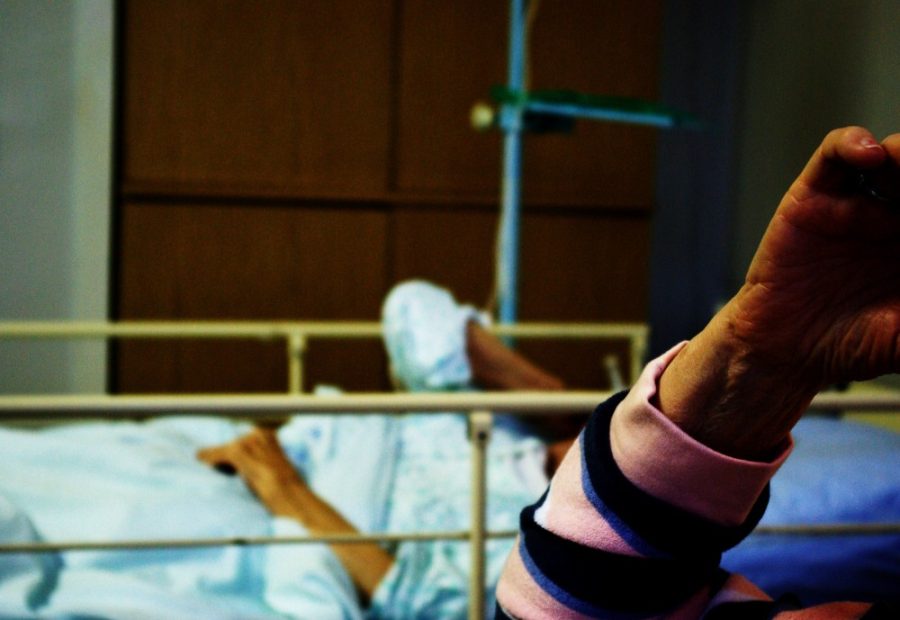When it comes to life and death, the discussion is not only limited to what it means to be dead or alive, but also when to consider someone a human or a person. There comes a point in time when our bodies reach the threshold between life and death, thus bringing us to question at which point we lose our identities as people and become just mere humans.
While the barriers between these four identities are still inconclusive and subject to debate, defining the intersection between them is an even greater concern in the context of organ demands in medicine.
Death is generally the moment when the biological processes necessary for self-sustaining life ceases to function. This could mean the death of a whole organism, which is an entity composed of at least one cell, or the death of a cell itself, which is the smallest unit of life.
In medicine, however, death is not so simple. The death of a person is a deceptively complex situation in which many considerations have to be made.
Speculations about the death criteria arose when the homicide of Pamela James in Defiance, Ohio, gained national attention in 1987. While initial medical reports stated the gunshot wound to her head was fatal, neuropathologists later found it was actually a heart transplant after the homicide that caused her death. James had in fact experienced a head injury from which she could have recovered.
Since then, the brain death criteria—as opposed to heart failure—have been widely used to declare a person dead. The brain death criteria mandate a diagnosis of total and irreversible loss of brain function.
Although the establishment of the brain death criteria has produced an increasingly robust system for determining life and death, there are still exceptions to the rule. In rare cases, patients who have been considered brain-dead have actually woken up.
“One of my students [name undisclosed] was declared dead because of a car accident,” said Dr. Angel Pimentel, a UA professor and bioethics expert. “There was no brain activity for days, but the parents insisted she would come back and the doctors were very upset with [them].”
While the information suggested that taking the student off life support was the most reasonable option, the student suddenly woke up for no reason.
“The more we learn about brain death, the more questions than answers we have,” Pimentel said.
Because of rare cases like this, medical experts still question what it really means to be dead. Furthermore, the lack of evidence or reasoning for explaining these exceptions urges medical experts to consider other ways to define death. Regardless, with the technology we have today, brain death may be the closest idea we have to grasping the true definition of death.
Both the brain and the brain stem lose their ability to function, according to the brain death criteria. However, humans are still considered alive if they do not have a brain, but have a brain stem.
Anencephalic infants, for example, are infants who lack a brain and complete skull, but often retain a brain stem. As a result, these infants can live up to 30 days because some neural processes in the brain stem-—which control vital organs as well as basic motor and sensory functions—are still happening within the body at early stages of child development.
Although anencephaly is a rare genetic disorder occurring in only about three in 10,000 pregnancies in the United States, some medical ethicists argue that the potential for saving lives of infants suffering from heart, liver or kidney disease in Canada and the U.S. makes these individuals valuable medical resources.
Neither Canada nor the U.S., however, have legalized organ donation from anencephalic infants, even after death, as a means of protecting anencephalic individuals and their families from pressures to sacrifice their disabled children for the better of others.
If we take a step back from this specific debate, we can see, however, that there is a larger discussion deeply embedded in the politics of what qualifies an individual for being an organ donor.
The controversy behind this case lies in the question of defining the border between being a human and a person.
A person is a human with the conscious ability to be aware of the past, present and future, and to project himself or herself in those settings in time, according to Pimentel.
Even though the retention of the brain stem allows anencephalic infants to move normally and be aware of their surroundings, the absence of a brain not only critically shortens an individual’s lifespan, but also impairs their ability to store memories and develop a sense of self. In the eyes of ethicists, anencephalic infants are often vessels that cannot form an identity, and therefore cannot be people even though they are still humans.
“You are what your brain does,” said Alexander Hartz, a philosophy junior with a specialty in ethics. “Without an identity, you are just a body.”
Ethicists also argue the inherent disabilities of anencephalic infants should not make them default candidates for organ donations. This argument can be applied to various situations pertaining to similarly disenfranchised individuals such as those suffering from genetic, physical or mental disabilities.
Despite the increasing gap between supply and demand for organs in North America, the debate over the definitions of life, death, person and human is far from settled. For now, the thin barriers separating a human from a person, and separating being dead from being alive, continue to confound experts.
Follow Pearl Lam on Twitter.









